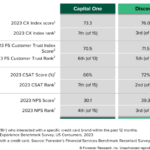In the next few days, our Brooklyn, New York condo will hit the market, and we will begin the first half of our long-planned, much-anticipated, greatly agonized-over 1031 exchange. When all is said and done, this transaction will catapult us from cash flowing $300/month on $1 million in equity to (hopefully) $4,000 to $5,000 a month instead.
If you are just joining our journey, we are chronicling all the ups and downs, wins and fail—um, ”learning moments” in our quest to get a much more favorable return on our investment.
This month, we head into the home stretch of our “sell” phase. The tenants wrapped up their final month with us in April and actually just moved a few floors to another available apartment in the building (that’s how awesome our place is!). We got the handyman in there to paint and polish earlier in the week, and today, the real estate team is taking pictures, which will be virtually staged. The live listing is imminent.
On the “target property” (buy) side, we have been underwriting properties until our fingers are sore. This is where most of our energy and hours not sleeping at night have been directed. It’s a steep learning curve.
Here’s what we’ve learned over the last few weeks.
Timing Is Everything
I am a planner, but there is only so much you can actually do ahead in this 1031 world. Deals you like that come out days or weeks before you are on market will likely be snatched up before you’re ready. That’s okay. It’s all good practice, and you’ve learned a ton about identifying good deals in the process.
Not Every Seller Will Be Comfortable With a Sale Contingency
Sure, you can try to lock your target early by building a sale contingency into your contract, but not everyone will be convinced. You know that a condo in Brooklyn is basically a stack of gold bars, but sellers across the country may not have that same confidence or frame of reference.
The Power of the CMA
That’s why you will also need a comparative market analysis (CMA). We learned what this was in the last month. Essentially this is a mini deck that your selling real estate agent can work up for you that shows the strategy behind your property sale, what you’ll price it at, comps to support it, how quickly those comps went under contract, etc.
This helps convince a seller in rural Texas that your sale contingency is a pretty safe bet. Sometimes it works.
Options Are Everywhere
If you’re just aiming for a solid base hit, which we agreed was our goal here—tight timing, the biggest investment of our lives, crazy interest rates, etc., all being complicating factors—you will find lots out there. Realizing this took a lot of the pressure off.
We need to transition our earnings out of Brooklyn and into a good investment. That’s the bar, and many deals fit this requirement. It’s parking our money in a cash-flowing, mostly hands-off investment. We don’t need to retire off this one deal.
Check Underwriting, Then Check Again
I almost pulled the trigger on a deal I loved. The numbers looked great. I had gone over the inputs again and again and checked them with the real estate agent.
Then I stared at the tax amount, and it seemed low. (Full disclosure that everything seems low to me, living in suburban New Jersey). I checked it again. Lo and behold, the number I had been using for the yearly bill was actually the monthly tax amount, which means the correct yearly amount was the number I had in my underwriting times 12. Whoops. The deal didn’t quite pencil out as well after that.
No one is going to rescue you from bad underwriting. I got lucky, but force yourself to check—and check and check.
Consider a Triple Net Lease
When you’re thinking about the three properties that you need to identify within 45 days of closing, don’t forget to consider triple net properties (NNN). These are true “mailbox money” investments, where you own the land and the building, but the tenant pays for taxes, insurance, roof, repair—the works.
These tenants are also usually on 10-to-20-year leases, and they are usually big, stable chains like fast food, grocery stores, auto part retail centers, and the like. (I first learned about NNN properties on an episode of Real Estate Rookies, by the way!) The returns can be more conservative, but the sleep-though-the-night peace of mind can make it worth it.
Our 1031 Journey So Far:
This 1031 diary will be a monthly series through 2024, chronicling our journey to a (hopefully) successful and profitable 1031 exchange, kicking off in May. We’ll share everything—all the numbers, the analysis, the good decisions, what we wish we’d done differently, the big mistakes (hopefully not many), and everything in between.
Have questions? Got advice? What are we missing? Share in the comments below!
Ready to succeed in real estate investing? Create a free BiggerPockets account to learn about investment strategies; ask questions and get answers from our community of +2 million members; connect with investor-friendly agents; and so much more.
Note By BiggerPockets: These are opinions written by the author and do not necessarily represent the opinions of BiggerPockets.









